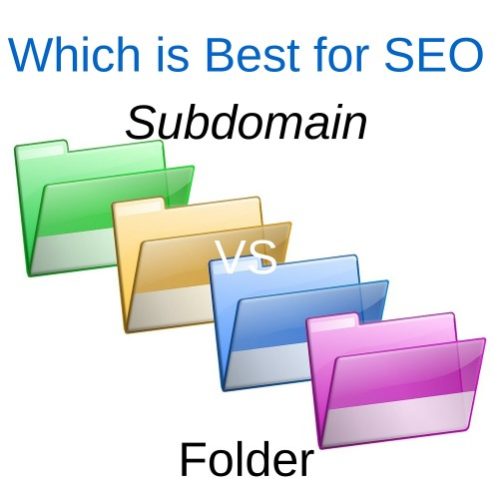

You’ve probably been involved in a “PC versus Mac” argument at some point in your life. Everyone seems to have very strong opinions on the subject, but what it really comes down to is personal preference in operating systems.
Most people know that they like one or another but may not be able to pinpoint what they really prefer about them. They may say they like a particular command prompt, or they enjoy some pre-installed software, the look and feel of the hardware, the applications or systems they can download, or even the pre-installed web browser. But the reality is that the features of an OS aren’t immediately clear to most users. A resource to help users understand the different processing and interaction elements of their favorite OS helps it become easier to work with.
Students (particularly online students), freelancers, contractors, and anyone who owns a phone, computer, or tablet should learn about different OSs so they can pick a computer and OS that meet their needs. If you’re planning to study IT in school and pursue an IT career, you’ll want a strong knowledge of OSs to make sure you’re prepared for all the skills you’ll need to be successful in your field.
What Is the Purpose of an Operating System?
Operating systems contain and manage all the programs and applications that a computer or mobile device is able to run, which means managing the device’s software and hardware functions. The functions of an OS include:
- Booting: Booting is the process of turning on the computer and powering up the system.
- Memory management: This feature controls and coordinates the computer applications while allocating space for programs.
- Loading and execution: Your OS will load, or start up, a program and then execute the program so that it opens and runs.
- Data security: A good OS includes features that keep your data safe and computer programs secure. Security features are set up to keep unwanted cyberattackers at bay.
- Disk management: This manages all the drives installed in a computer, including hard drives, optical disk drives, and flash drives. Disk management can also be used to divide disks, format drives, and more.
- Process management: Your OS is designed to allocate resources to different computer processes, enable the processes to share information, protect them, and synchronize them.
- Device controlling: Your OS will allow you to open or block access to devices like removable devices, CD/DVDs, data transfer devices, USBs, and more.
- Printing controlling: As an extension of device controlling, your OS takes control of the printers that are connected to the computer, and the materials that need to be printed.
- User interface: Also referred to as a UI, this is the part of the OS that allows a user to enter and receive information. This can be done with typed commands, code, and other formats.
The Five Most Popular Operating Systems
There are five main types of operating systems. These five OS types are likely what run your phone, computer, or other mobile devices like a tablet. Whether you’re just a normal computer and phone user or someone hoping to get involved in an IT career, knowledge of applications and systems types will help you maintain security and user access, perform routine operations, and much more.
Microsoft Windows.
The Windows OS has been around since the 1980s and has had several versions and updates (including Windows 95, Windows Vista, Windows 7/8/10, etc.) Microsoft Windows is one of the popular operating system types and is preloaded on most new PC hardware. With each new Windows update or release, Microsoft continues to work on improving their users’ experience, hardware, and software, making Windows more accessible and easier to use.
Microsoft Windows contains a control panel, a desktop and desktop assistant, disk cleanup, event viewer, and more. Many users prefer Microsoft Windows because they say it’s compatible with many other kinds of software. Many kinds of computer programs run best on Microsoft Windows because they’re developed by Microsoft.
Apple macOS.
Head-to-head in the competition with Microsoft Windows is Apple’s macOS. macOS and Windows are both examples of proprietary operating systems, meaning that the company conceptualized, designed, developed, and now sells their own OS. They’re designed and sold by the companies and aren’t meant to be tampered with or tweaked by users. Apple and Macintosh computers run on the proprietary macOS and OS X system, the first of which launched 20 years ago. There are also previous versions or updates which include:
Kodiak (OS X 10 Beta)
Lion (OS X 10.7)
Mountain Lion (OS X 10.8)
Mavericks (OS X 10.9)
Yosemite (OS X 10.10)
El Capitan (OS X 10.11)
Sierra (macOS 10.12)
High Sierra (macOS 10.13)
Mojave (macOS 10.14)
Catalina (macOS 10.15)
Big Sur (macOS 11)
The macOS and Apple/Mac products are also known and beloved by their users for ease of use and continually improving user experience. Fast processing speeds, a simple desktop interface, and a wide variety of helpful resources make users excited about macOS. Many users relish the instant connection with their computers and mobile phone hardware, and enjoy the lack of bugs and hackers that Apple systems are known for.
Google’s Android OS.
The OS that companies including Google use to run its Android mobile smartphones and tablets is based on Linux distribution and other open source software. Android OS is the primary OS for Google mobile devices like smartphones and tablets. Android has gained increasing popularity since its release as an alternative to Apple’s iOS for smartphone users and is continuing to increase in popularity with new updates and exciting features.
Apple iOS.
Apple’s iOS is another mobile operating system used exclusively for iPhones, some of the most popular mobile devices on the market. iOS integrations have regular updates, new expansions to software, and continually are offering new features for users even if they have older devices.
Many users appreciate the unique user interface with touch gestures, and the ease of use that iOS offers. This operating system also allows other Apple devices to connect, giving users easy connections to other devices or people.
Linux Operating System.
Linux is different from Windows and Apple in that it’s not a proprietary software, but rather a family of open source systems. In other words, anyone can modify and distribute it. Linux may be the least known on this list, but it’s free and available in many different open source versions. Linux is popular because of its ease of customization and offers a variety of options to those who understand how to use it. If you know how to customize and work with operating systems, Linux is an ideal choice. And if this kind of coding and back-end work is interesting to you, it may be a good idea to purchase a Linux system and get started on manipulating it.
What Are Some Examples of Operating Systems?
Some examples of operating systems include Apple macOS, Microsoft Windows, Google’s Android OS, Linux Operating System, and Apple iOS. Apple macOS is found on Apple personal computers such as the Apple Macbook, Apple Macbook Pro and Apple Macbook Air. Microsoft Windows is found on a variety of personal computer platforms from brands such as HP, Dell, and Microsoft itself. Linux is an open source OS that can be modified by users, unlike those from Apple or Microsoft. Though it started out being used for personal computers, usage has since expanded to phones and other smart devices, servers, gaming, and more.
Android is a Unix-like mobile operating system that you’ll find on your mobile phone or tablet, depending on the device brand. Similarly, Apple iOS is found on Apple mobile devices such as an iPhone (though it previously ran on Apple iOS, iPad now has its own OS called iPad OS).
Mobile vs. Computer
So why are there different types of operating systems for mobile tech and computers? There are several reasons a single system doesn’t work perfectly for both. Computer and mobile OSs are different because they’re developed for different uses.
Computer systems have to store lots of complex data, have a different user interface, and need to be prepared for printing, removable disks, and more. They feature a desktop and a control panel for users to manage all of their information. Computer operating systems are also older, and therefore more familiar to the IT industry; they’ve been around much longer than phones that utilize operating systems.
Mobile phones don’t feature a desktop that’s the same as a computer desktop. Their user interface is much more about simple moves—things you can do with your fingers or voice—so it’s designed to offer a simpler interface. There are many resources to help users learn more about operating mobile phone systems, as they’re very different from computer systems.
Touch screen user interfaces, smartphones, and mobile devices are everywhere and part of life, and need operating systems. If you’re considering a career in IT, you probably know that the technology is continuing to grow and develop, and there will be plenty of opportunities for the future.
How Many Operating Systems Are There?
For the most part, the IT industry largely focuses on the top five OSs, including Apple macOS, Microsoft Windows, Google’s Android OS, Linux Operating System, and Apple iOS. But that’s just the tip of the operating system iceberg. There are numerous free OS options in addition to Linux including Chrome OS, Syllable, and ReactOS, which was initially launched as a Windows95 clone.
But that’s just in the world of personal computers, mobile devices, and tablets. When you examine server OSs, the number jumps considerably. All told, there are over 63 base proprietary OSs with various versions or updates, in addition to another 26 non-proprietary OSs.
As tech continues to advance, and as younger generations like millennials grow up with technology and move to the workforce, the need for technology in business settings will only grow. Younger generations are fueling the features and applications that operating systems provide for personal and business use. If you’re considering a degree in IT, now is the time to start. A future career in computers or IT will provide you with plenty of job opportunities, industries, and endless possibilities.
[“source=wgu”]





